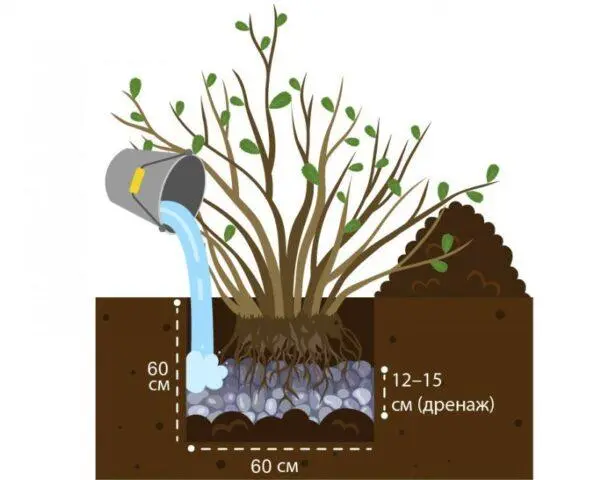Contents
Planting and caring for Japanese quince in the Moscow region require certain rules to be followed. Growing bushes is real. It must be borne in mind that the fruits themselves will be greenish (most likely, they will not have time to ripen). Therefore, they will have to be kept at room temperature at home.
Does quince grow in the Moscow region
The Japanese quince tree (henomeles) can be grown in the climatic conditions of the Moscow region and other regions of the middle zone. Some varieties are winter hardy, so they will endure moderate frosts and even produce a crop. When growing, you should take into account several rules of care:
- Shrubs cope well with drought and require little watering (more often in the heat). But to get a harvest, it is important to regularly feed.
- A very important care point: plants are demanding on sunlight. Therefore, a completely open area is chosen for planting.
- Bushes bear fruit, but they ripen quite late – usually by the beginning of October. And in cloudy summer they will remain green. Therefore, they are harvested and left to ripen at room temperature.
- Even winter-hardy varieties need shelter. In autumn, you need to lay out a high layer of mulch (20–30 cm). This rule of care is especially important for young seedlings.
Planting and caring for Japanese quince in the Moscow region
Japanese quince can also be grown in the Moscow region, but for this she needs to be properly cared for. Basic requirements for planting: fertile soil, timely watering, fertilization and thorough mulching for the winter.
Terms of planting
In the climatic conditions of the Moscow region, it is better to plan the procedure for late spring. Landing is best done in the last decade of April or early May. At this time, the soil should have time to warm up to at least 10-12 degrees. This can be determined by burying the thermometer to a depth of 15 cm and holding it for 15–20 minutes.
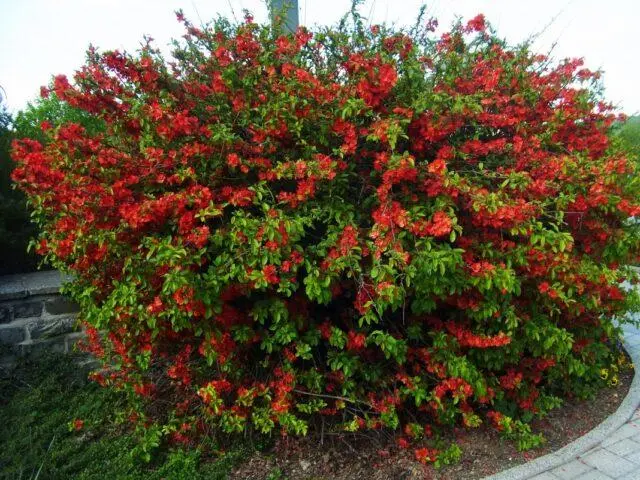
If the spring turned out to be cold, it is better to postpone the planting of quince in the Moscow region 1-2 weeks later
Autumn procedure is possible, but undesirable. If the deadline is missed in the spring, seedlings should be planted in the first half of September, i.e. 1,5–2 months before the first frost. In this case, you need to especially carefully take care of the winter shelter.
To ensure proper care for Japanese quince in the Moscow region, seedlings should be planted on a fine day, early in the morning or late in the evening.
Site and soil requirements
Japanese quince also ripens in the Moscow region, but in order for the bush to feel comfortable, it is important to choose the right place for planting it. It should be:
- completely open (even weak shading is not allowed);
- protected from drafts, strong winds (especially from the north side);
- not waterlogged (lowlands, where moisture periodically accumulates, should be excluded).
Japanese quince prefers light, fertile loamy soils. It is best if the reaction is slightly acidic (pH = 6,0–6,5). Therefore, the soil for planting should be prepared in advance. To do this, in the fall, the site is cleaned and dug up. A bucket of compost or humus is introduced into the soil (for 2 m2), as well as 1 kg of sawdust or sand for the same area (if the soil is heavy, clayey). Sometimes the soil in the Moscow region can be alkaline (pH over 7,0). Then it must be watered with 9% vinegar before planting. Working solution for 1 m2 squares – 100 ml per 10 l.
How to plant
It is better to buy Japanese quince seedlings for planting in the Moscow region in nurseries or from trusted suppliers. Their age should be 1 – maximum 2 years. The root system is closed (in planting containers).
Prepare for landing in a few weeks:
- Dig holes with a depth and diameter of 60 cm at a distance of 1,5 m from each other.
- Small stones are laid out at the bottom. This should be done when groundwater comes too close to the surface. The drainage layer should be powerful enough – up to 15 cm. Then further care will not cause difficulties.
- A mixture of soddy soil with compost, black peat and sand (2: 1: 1: 1) is covered up and allowed to lie down for 2-3 weeks.
- Then the Japanese quince seedlings are placed exactly in the center and the soil is compacted a little so that the root neck goes to a depth of 5–7 cm.

- Make a small indentation around the trunk.
- Mulch with bark, sawdust, needles or other materials.
When planting Japanese quince in the fall in the Moscow region, it is important to carefully mulch the roots.
How to care
Along with planting, it is important to ensure proper care for Japanese quince in the Moscow region. There are several rules to follow:
- Young seedlings need intensive weekly watering. At the same time, the soil should have time to dry out – moisture stagnation is unacceptable.
- Grown bushes need watering only during the dry season. They are given 3-4 buckets of water every week. If it rains periodically, additional moisture is not needed.
- Another important rule for caring for Japanese quince in the Moscow region is top dressing. If fertilizers have already been applied on the eve of planting (or during it), then new top dressings are given only from the next season. In April, you need to close up 150 g of potassium nitrate and 300 g of superphosphate for each seedling. In June, ammonium nitrate (20 g) is used, and in September they are fed with mullein (30 g per 3 liters per 1 plant).
- The trunk circle is mulched even in summer. This eliminates weeds and protects the soil from drying out quickly, and the roots of the Japanese quince from returning frosts. Although it is still necessary to loosen the soil and periodically remove the grass.
- An essential requirement for care is regular pruning of Japanese quince. In the spring, you need to remove frozen, diseased and weak branches (at the very beginning of April). And in the fall (mid-October) they make a shaping and rejuvenating haircut. To do this, you need to cut the branches that go beyond the general contour, leaving at least a third of their length. All cuts are treated with crushed charcoal or garden pitch.
When and how to collect Japanese quince in the suburbs
In the climatic conditions of the Moscow region and other regions of the middle zone, the Japanese quince ripens rather late. This happens in autumn: from the end of September and lasts until mid-October. The yield from one adult bush reaches 1-2 kg. If you organize the correct fit and good care, you can achieve 2,5–3 kg per crop.
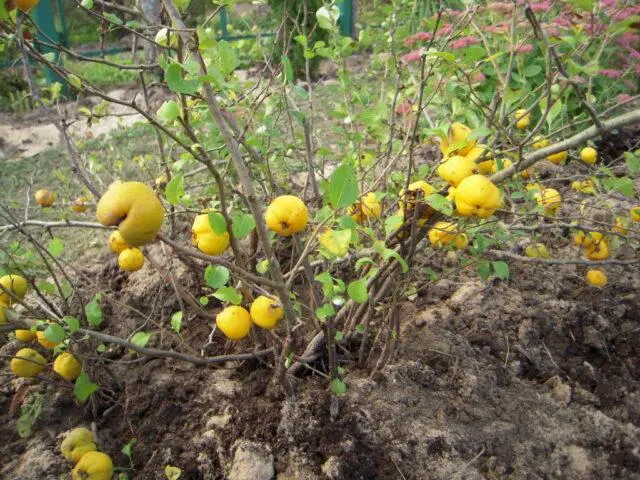
Japanese quince in the conditions of the Moscow region does not have time to ripen completely and remains green
The unripe crop must be harvested before frost, otherwise it will die and disappear. The flesh may become watery and lose flavor. Therefore, the fruits are removed and laid in one layer on the floor in the room. They can be stored for a long time under such conditions. Gradually, the fruits will acquire a normal yellowish color.
It is better to collect Japanese quince in dry, clear weather so that it does not get wet. The fruits are plucked by hand, while they are not thrown, but carefully placed in a bucket or other container.
Ripe quince is stored at a temperature of 2-3 degrees Celsius (on the balcony, in the cellar, basement). Humidity in the room should not be very high – up to 70%. Under such conditions, the Japanese quince is preserved without additional care for 4–5 months.
Preparation for winter
One of the main rules for planting and caring for quince in the Moscow region is timely preparation for winter, which is especially important for young seedlings (the first 2-3 years). Warming measures begin three weeks before the first frost, i.e. around the middle of October.
To protect the roots, you need to pour a high layer of mulch (at least 20 cm) into the near-trunk circle. It is permissible to use spruce branches, bark, fallen leaves (but only from other trees), sawdust. It is also recommended to install a shield from wind and snow next to the plant.
The best self-fertile varieties of Japanese quince for the Moscow region
When growing common quince in the Moscow region, it is important to choose the right variety. It should be not only winter-hardy, but also self-fertile. Thanks to this, it will not be necessary to plant other varieties or attract pollinators – the fruits will be tied on their own.
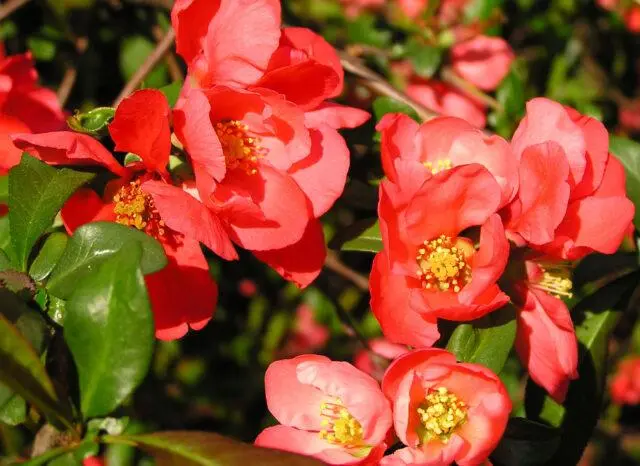
Quince is used to obtain fruits, as well as an ornamental crop.
Zubutlinskaya
Zabutlinskaya (Zubutlinskaya) – a medium-sized bush. With proper planting and care in the suburbs, it gives fairly large fruits. They have good transportability and keeping quality, so they can be transported over long distances. This variety of quince is winter-hardy, tolerates strong gusts of wind well.

Zabutlin quince is immune to common diseases
Pink Lady

Pink Lady (Pink Lady) – another winter-hardy variety that needs simple care
The bushes are low, reaching only 120 cm. At the same time, the crown is beautiful, lush, and the flowers are pale pink. Thanks to this, the variety got its name Pink Lady.
Sergeants
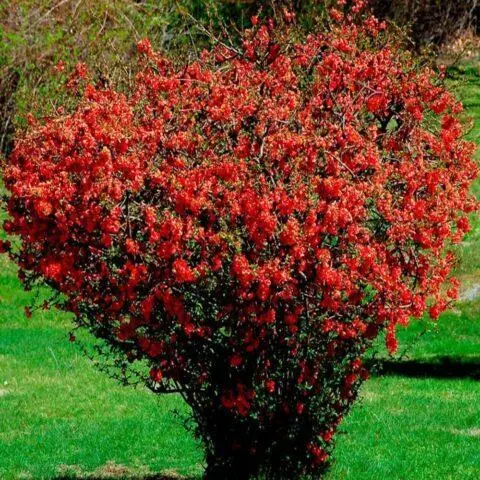
Variety Sargentii (Sargentii) is characterized by long and abundant flowering
The culture gives quite high and stable yields. The crown is spherical, the foliage is dark green, the flowers are orange. The variety is undemanding to care – it can be grown in the Moscow region.
Nicloline
Variety Nicolin (Nicloline) is a medium-sized bush up to 120 cm high. Its crown is sprawling, reaching 1,5 m wide.
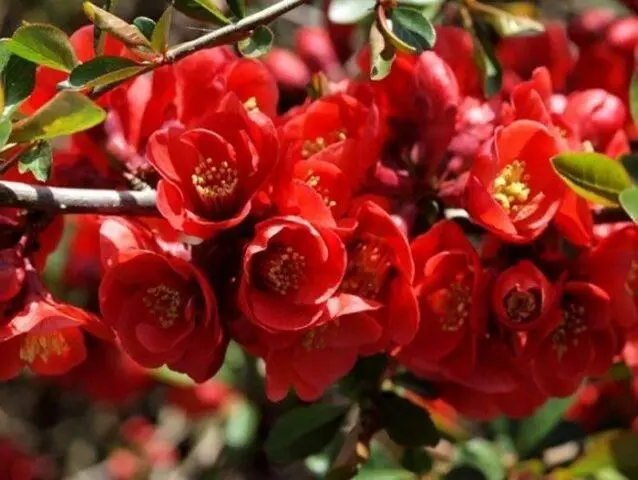
The flowers of the Nikolin variety are bright red in color.
Care is easy. The culture requires minimal shelter for the winter. Nikolin’s winter hardiness index is high.
Elly Mossel

Elly Mossel – ornamental variety
The bush grows to a height of up to 70 cm. The inflorescences are bright red. Suitable for planting in flowerbeds with medium-sized flowers. It looks good in compositions, especially in alpine slides.
Geisha Girl
Geisha Girl (Geisha girl) – a medium-sized bush up to 150 cm high. It blooms in early May, pink-cream flowers. They are used not only for growing fruits, but also for decorating the garden.
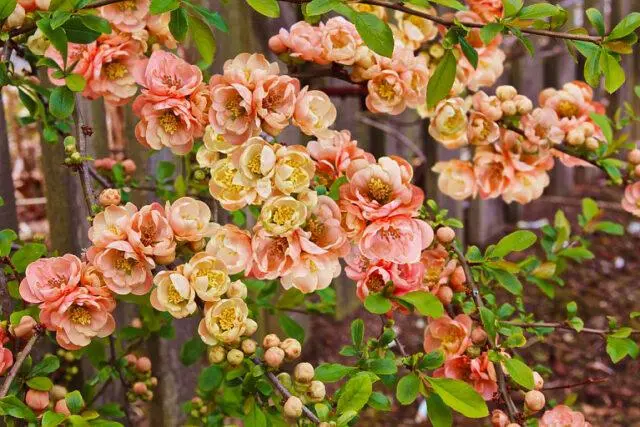
The Geisha Girl variety is used in single plantings and compositions.
The Geisha Girl variety is used in single plantings and compositions.
Conclusion
Planting and caring for Japanese quince in the Moscow region is not as difficult as it might seem at first glance. The tree needs fertile, light soil with a slightly acidic reaction. The site must be dry and sunny. If you follow simple rules of care, 2–3 kg of fruit can be harvested annually from each adult bush in the Moscow region and other regions with a temperate climate.
Reviews on the cultivation and care of Japanese quince in the Moscow region
Galina Timofeeva, 56 years old, Odintsovo
I decided to start planting Japanese quince. I didn’t know whether the culture would take root or not in the latitudes of the Moscow region. Thought it would be hard to take care of. The experiment was a success – it grows normally, not far from the apple tree. But it is better to plant away from trees, because it loves light. Can’t handle transplant. For the winter, I definitely mulch the trunk circle. In the summer (during the drought) I water. Care is simple, and the harvest pleases the household.
Julia Romantsova, 39 years old, Korolyov
Our Japanese quince Zabutlinskaya has been growing for several years, and we are no longer surprised, although we doubted when planting. There is no need to be afraid of anything – caring for her is the same as caring for an apple tree. It grows as an ornamental bush, and in the autumn it gives the quince itself. Only the fruits are small. But if the summer was warm and sunny, then the taste is pleasant, sweetish.










